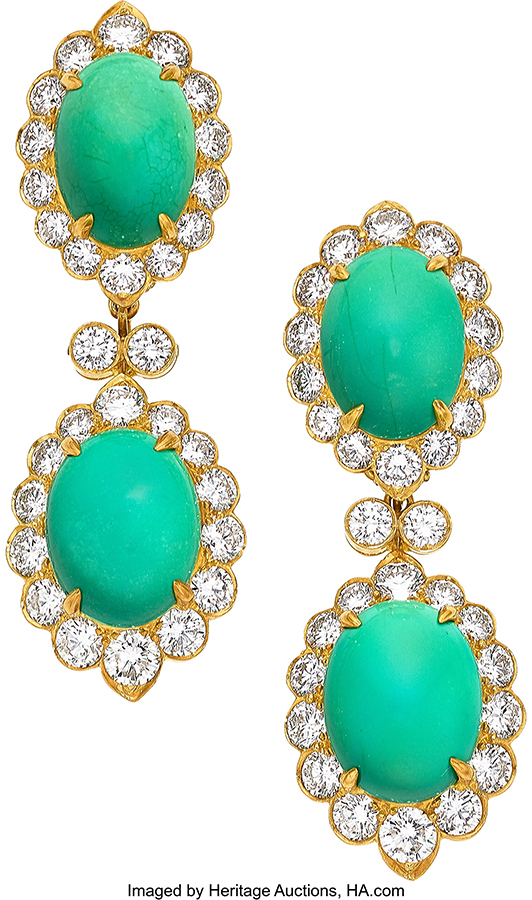FROM HOME SAFES AND OFF-SITE STORAGE TO INSURANCE AND SHIPPING, HERE’S WHAT YOU NEED TO KNOW TO PROTECT YOUR COLLECTIBLES
By James Halperin and Greg Rohan
Crimes against property are on the rise, and the reasons that fine art, antiques and collectibles are great investments are the same reasons they’re great targets for thieves. The current arrest and conviction rates are abysmal, and the odds of recovering stolen goods are even lower. With budget constraints forcing law enforcement to deprioritize property crimes, the outlook for a reversal in that trend is not good. The only solution is to do what you can to protect your collection against criminals – and make sure that it is properly insured in the event that you are the victim of a crime (or natural disaster).
Security vs. Access
Most collectors want their treasures close at hand to study and enjoy – even though that is a suboptimal loss prevention strategy. Your collection is at risk from theft, fire, water damage and other natural disasters. If you are going to have objects of substantial value at your residence, you should consider several proactive measures to protect them:
- Monitored Security System: A monitored system is at the core of any security plan. This includes both theft and fire alarms that are monitored externally and immediately reported directly to police and fire departments when triggered. Hardware can be installed for a few hundred to a few thousand dollars, and monitoring involves a monthly expense, around $25 to $75. A monitored security system sends most burglars looking for easier targets and puts the more daring ones on the clock. Once the system perimeter is breached, the burglar has only the response time to grab what he can and attempt an escape. This might seem like a pain and a substantial investment, but there are advantages. According to the Insurance Information Institute, the average homeowner’s insurance discount provided based on the presence of a monitored security system is between 15 and 20 percent; according to the Electronic Security Association, the average loss on a home with a system is $3,266, compared with $5,343 for an unprotected home. You’ll also be protecting your neighborhood as a whole. A 2009 study by the School of Criminal Justice at Rutgers University found that the higher the percentage of homes in a neighborhood that have security systems, the fewer break-ins occur in that neighborhood, providing a benefit even to residents who don’t have a security system.
“SAFES ARE OBVIOUS DETERRENTS AGAINST THEFT AND HAVE ADDITIONAL VALUE IN THE EVENT OF FIRE OR NATURAL DISASTER.”
- Home Safe: Safes are obvious deterrents against theft and have additional value in the event of fire or natural disaster. Costs are based on size and fire (temperature) “TL” rating. You should make your determination only after discussing your particular needs with an expert. Many insurance companies require a home safe to write a collectibles rider to your homeowner’s policy.
- Deterrent Practices: There are other actions that reduce the risk of a successful burglary. Always leave the impression that someone is at home. This can be accomplished in part by remembering to have your paper and mail held while you are out of town and by placing one or more of your lights on timers. “Beware of Dog” signs are also helpful in warding off potential burglars.
- Camouflaging Valuables: Most people are predictable, and experienced burglars know all the “good” hiding places. Typically, people keep their valuables in the primary bedroom and home office. Guess where burglars go first? So, try to avoid these typical hiding spots and leave decoys. One gentleman we know has numerous coin albums (filled with pocket change) in plain sight on the bookshelves. Another has an old safe that is heavy but movable. It resides in the corner of his home office and contains absolutely nothing. Its predecessor was removed in a burglary during which the thief left behind several thousand dollars’ worth of electronics because he thought the safe was the jackpot. The homeowner now has a monitored security system and modern wall safe but still keeps a decoy as a reminder of the importance of security, and the burglar was the recipient of nothing but an empty box (and perhaps a hernia). If you don’t own a safe, small valuables are best hidden in a false outlet with an object plugged into it. A collection of small items should be spread over several non-obvious locations.
Off-Site Storage & Transport
The primary off-site storage option is a safe deposit box at either a bank or private vault. If you can find a location close to home or work, the inconvenience factor can be minimized. Sites with weekend access offer a major advantage. Remember that while safe deposit boxes offer secure storage, vigilance is still important. Here are a few storage and security guidelines you need to remember and follow:
- Rent a box that is large enough to hold everything easily.
- Use a desiccant such as silica gel to remove any moisture, and change it regularly.
- Never forget that your greatest security danger is in transporting the collectibles to and from the box. Use a nondescript container to hold them, and try not to carry too much weight at once.
- Have someone drive you to the location, or, if you must drive yourself, park as close to the entrance as possible to minimize your time on the street with the valuables.
- Avoid establishing a pattern in picking up or dropping off your collection.
- Be aware of your surroundings when transporting your collectibles. Check your rearview mirror frequently, and if you believe you’re being followed, do not drive directly to your destination. Make several detours that do not follow any logical traffic pattern and see if you are able to lose the suspect vehicle. Know the location of the closest police station, and if you can’t lose your stalker, drive there directly. We know this sounds a little like a made-for-TV movie, but it’s important.
- Carry a cell phone with you when transporting valuables. A frightening robbery technique is to rear-end a vehicle and then rob the driver when he or she exits to assess the damage and exchange insurance information. You will have to use your judgment in this situation, but if you are carrying valuables and are rear-ended, you should remain in the car and call 911. Don’t hesitate to tell the operator that you are carrying valuables and are concerned about the possibility of robbery. If you really believe that it is a setup, don’t stop – call 911 and explain the situation while driving to the police station. With their steady flow of people, noise and confusion, airports have also become a favorite hub for thieves. The usual method is the snatch-and-grab; the thief targets someone who appears distracted, grabs the briefcase or bag and melts into the crowd. A variation is the use of teams of criminals located where baggage is being unloaded at the curb. A few of the thieves distract the victim while others grab the bags, after which all of them make their escape in a waiting vehicle. Your only protection is constant vigilance. You should always either have a grip or your foot on any case containing valuables. Some people carry a loud whistle when transporting valuables. If someone attempts to grab a bag and you start blowing the whistle, the thief is put on the defensive. Everyone else in the area is confused or startled by the noise and the thief loses the camouflage of the crowd.
Shipping
First and foremost, do not attach anything to the outside of the package that would hint at its contents. When Ty Inc., the company behind Beanie Babies, realized that boxes were being lost during shipping in huge quantities at the height of that mania, it made a simple change by removing its logo from the boxes. Consequently, shrinkage shrank dramatically. If a package contains any identifying words, such as “coins,” in the mailing address or on the outer wrapping, it makes the contents of that package more appealing to thieves.
Pack the items securely so that they do not rattle. Loose spaces (such as in tubes) should be filled. Styrofoam “peanuts” are good for this purpose. Make sure that your shipping box is strong enough for the included weight, then bind it with strapping tape. If you are using Registered Mail (the preferred method for most collectors to ship small packages containing valuable items), the Post Office has a requirement that all access seams be sealed with an approved paper tape.
“NO MATTER HOW MANY SECURITY MEASURES YOU EMPLOY TO PROTECT YOUR COLLECTION, YOU WILL ALSO NEED TO ACQUIRE SUITABLE INSURANCE TO PROTECT YOURSELF.”
Method of shipment involves a decision that weighs value, risk and cost. USPS First Class or Priority Mail with insurance is the most cost-effective method for packages up to $500 in value. The rate of loss has dropped considerably over the last decade, making this a reasonable option for inexpensive items that can be replaced. Above the $500 value, Registered Mail with Postal Insurance is both cost-effective and extremely safe. The one caveat is that the insurance maximum for Registered Mail is $50,000. The Post Office requires you to indicate if the contents exceed that amount, but it will not pay more than $25,000 on a claim. If the value exceeds that amount, you will need to send multiple packages or obtain supplemental private insurance.
FedEx, UPS and other private shippers have become popular in recent years, offering fast, guaranteed delivery with a high success rate. They also offer some insurance options, but rare coins and certain other collectibles are specifically excluded. You will need to obtain private insurance coverage if you use one of these shippers, or you may request that the other party insures the shipment if there is sufficient coverage available and a shipper account.
Insurance
No matter how many security measures you employ to protect your collection, you will also need to acquire suitable insurance to protect yourself. As a collector, you need to be especially mindful of homeowner’s insurance because you likely will require a policy that differs from a standard one. You need to know exactly what coverage you are – and are not – receiving. That means asking questions and reading every word of every document in every policy you sign. In the case of coins, you need to be particularly certain of what coverage applies when the coins are at home, in a safe deposit box or in transit, as well as any additional security requirements for each circumstance. Some things to keep in mind:
- Most homeowner’s policies do not insure your coin or jewelry collection beyond $1,000 (combined with all other items defined as a “valuable”). Most insurance companies will offer a rider for more specific coverage, but since it’s not their standard business, they typically are not very flexible. You will be required to provide a fixed inventory, and modifying the coverage whenever you buy or sell items from your collection will likely require a major paperwork effort.
- Some insurance companies require an “appraisal for insurance.” In this specialized field, the best option often comes from a company that is familiar with the needs of collectors.
- In the case of collectibles other than coins, you may want to ask a dealer to recommend a knowledgeable insurance company. Not all insurance companies possess the expertise or coverage options that collectors require. While premiums vary, price is not the only consideration. Find an agent and a company with a good reputation and expertise in the field of collectibles. You may have to pay a little more, but it will be well worth the price if you ever have to submit a significant claim.
One final note about security: You need to be careful about discussing your collection (and especially where you keep it) with others. Enjoy your collection, but stay vigilant.
This article is excerpted from The Collector’s Handbook: Tax Planning, Strategy and Estate Advice for Collectors and Their Heirs.
 JAMES HALPERIN is Co-Chairman and Co-Founder of Heritage Auctions.
JAMES HALPERIN is Co-Chairman and Co-Founder of Heritage Auctions. GREG ROHAN is President of Heritage Auctions.
GREG ROHAN is President of Heritage Auctions.



